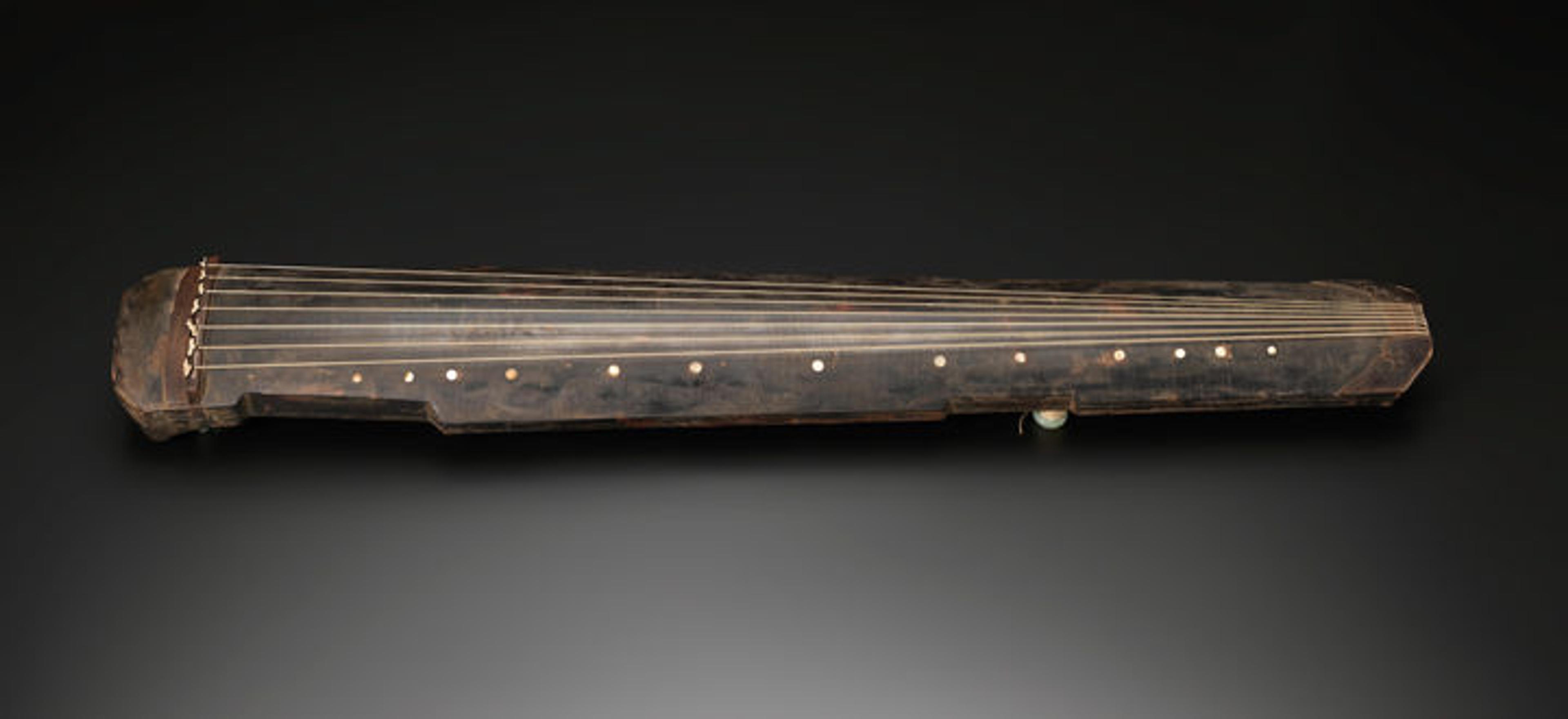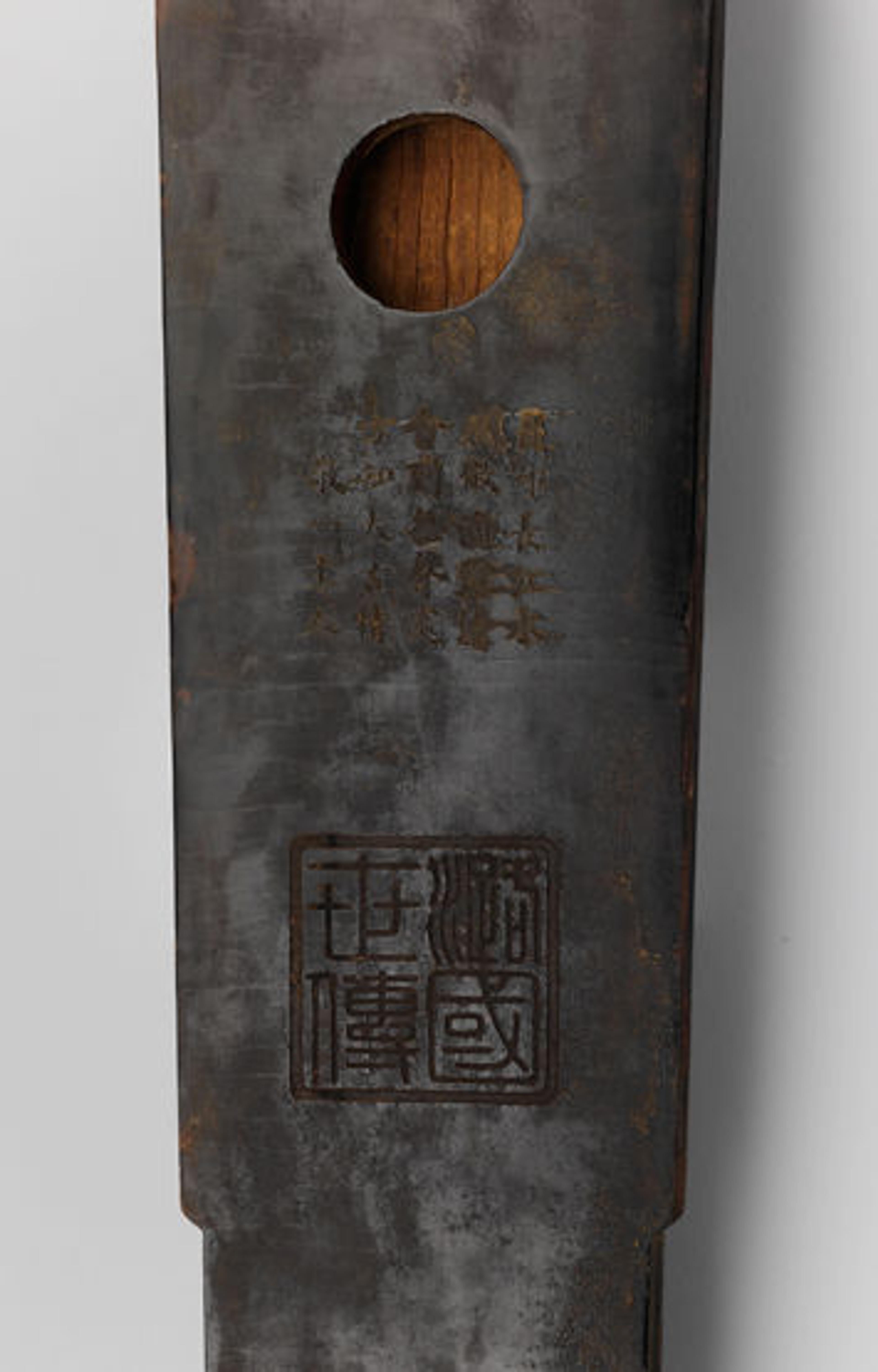The Sound of a Royal Qin

Prince Lu (Chinese, 1628–1644). Qin, 1634. China, Ming dynasty. Wood (wutong and zi), silk, jade, lacquer, mother-of-pearl, Height: 7 3/16 in. (18.2 cm), Width: 47 11/16 in. (121.2 cm), Depth: 2 1/2 in. (6.4 cm). The Metropolitan Museum of Art, New York, Purchase, Clara Mertens Bequest, in memory of André Mertens, Seymour Fund, The Boston Foundation Gift, Gift of Elizabeth M. Riley, by exchange, and funds from various donors, 1999 (1999.93)
«The musician Jiaoyue Lyu recently visited the Museum and recorded on a Chinese qin—a plucked zither—from The Met collection made during the Ming dynasty (1368–1646) for the prince of Lu. Many noblemen and princes were accomplished musicians in the Ming dynasty and several made important contributions to musicology and musical theory. Zhu Changfang (1608–1646), the prince of Lu and nephew of Emperor Wanli (Shenzhong), commissioned and oversaw the building of more than 300 qins, all of which bear the inscription of the Princedom of Lu. The Museum's qin is dated 1634, the same year the prince wrote a treatise about the instrument, Guyin Zhengzong, and is the earliest of the 10 or so extant instruments from the Prince Lu collection.»
The qin is China's quintessential classical instrument. Traditionally a scholar's instrument, its quiet music, whether played in solitude or for an intimate friend, expresses one's innermost and profound emotions. During the Han dynasty (206 B.C.–A.D. 220) writers claimed that playing the qin helped to cultivate character, understand morality, supplicate gods and demons, enhance life, and enrich learning. Literati of the Ming dynasty (1368–1644) suggested that the qin be played outdoors—either in a mountain setting, garden, or small pavilion, preferably near an old pine tree with incense perfuming the air. A serene, moonlit night was considered an appropriate time for performance.
Today the qin's extensive repertoire is played publicly, but the music remains complex and evocative as the player plucks, snaps, and dampens the strings to create embellishments such as slides, bell-like harmonics, ornaments, and vibrato. The present form of the qin, with seven unfretted silk strings and thirteen studs (hui) marking various finger positions, emerged only in the late Han period (A.D. first century), although according to legend, the qin was played in the time of Confucus (sixth century B.C.) or even earlier.

Left: Detail view of The Met's qin showing a poem and the "Heirloom of the Lu State" inscription
On the back of The Met's Prince Lu qin are the maker's seal and date, as well as a poem by Jingyi Zhuren (d. 1670) that translates as:
The moonlight is being reflected by the river Yangzi
A light breeze is blowing over clear dewdrops,
Only in a tranquil place
Can one comprehend the feeling of eternity.
Watch Jiaoyue Lyu perform Ode to Autumn Wind, a popular Chinese small tune, in The Met's Astor Chinese Garden Court below.
Related Links
Of Note: Ken Moore, "On Acquiring a Rare Early Seventeenth-Century Koto" (April 13, 2015)
MetMedia: The Moon over the Mountain Guan, Performed by Jiaoyue Lyu
Ken Moore
Ken Moore is a curator emeritus in the Department of Musical Instruments.